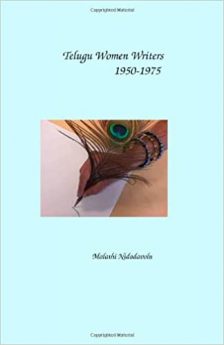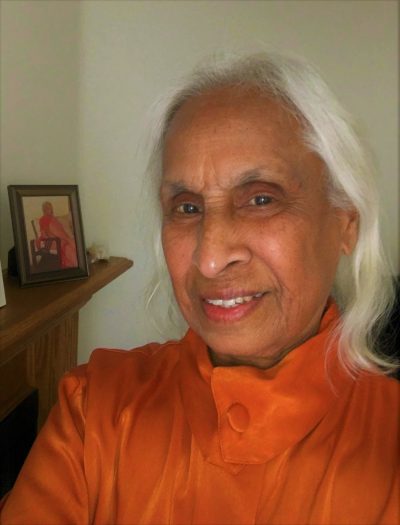Telugu Women writers-11
-Nidadvolu Malathi
Female Scholars’ Perspective in the Academy
Some of the contemporary women writers from the academy subscribed to the view that Sulochana Rani’s fiction was doing more harm than good to the society. C. Anandaramam, a noted writer and Telugu professor, commented in her study of fiction of the seventies and eighties as follows:
The readers are drenched in an illusory world filled with six-foot tall heroes, fancy foreign cars, colossal mansions surrounded by lawns and water fountains. Since this [kind of] uninterrupted happiness gets boring, they [the characters] are also depicted as suffering from a few imaginary hardships arising from spilling tears misunderstandings.
Because of the change that has taken place in the economic and social disposition of women in the society, [these] two decades have come to be known as an era of female fiction writers.
The critic apparently ignored the fact that Sulochana Rani was writing romance fiction. As such, it would be appropriate to review her fiction, based on the criteria designed for that specific genre. On the other hand, if Anandaramam meant that the romance fiction must be dismissed as commercial literature, it could be argued that Sulochana Rani successfully measured up to the standards of commercial writing.
Ironically, one of the contentions of the feminists has been that women were not able to publish due to gender discrimination! Apparently, Sulochana Rani has succeeded in writing novels that publishers would kill for!
I am not sure if there is a demonstrable basis for this charge against Sulochana Rani. Nevertheless, I would like to quote the comment made, in a different context, by Kodavatiganti Kutumba Rao, known for his critical analysis. Kutumba Rao stated that the books themselves do not make people good or bad, but only serve as an affirmation for those who are looking for a validation of their own actions or decisions. I am inclined to agree with Kutumba Rao.
The point is while the academy continued to dismiss some of the writers as non-productive and their writings as “non-literature”, the public embraced them with extraordinary zeal. This raises the question which one is acceptable as a genre and which is not, and who decides it.
Sulochana Rani did not receive validation from the academy in the sixties and probably not in the seventies. However, she remains to be one of the top-ranking writers in terms of readership and financial success.
Discerning Readers Outside the Academy
By mid-sixties, Lata gained respect among fellow writers, male and female. Anjaneya Sarma, a civil engineer by profession, wrote a book on Lata, Sahitilata. He quoted excerpts from numerous letters Lata had received from male writers and ardent readers of her fiction. For instance, Buchibabu, an eminent writer known for his psychoanalytical fiction, wrote [original in English]:
There is a social consciousness in your writings. Probably Chalam, Alberto Moravia, [and] Lawrence wrote not without a reason. I feel proud without reservation that we all are probing the same truth. Maybe you had read their writings. We all are exploring the same home called social values and each of us opening a different window, and thereby making the home livable. No one writer can accomplish a literary tradition single-handedly. Several persons have to make a combined effort. Your book is supporting that effort.
Toleti Kanakaraju, well-known physician and scholar, wrote in English:
I found you depicting ‘provoking incidents’ but in the latest work of yours you could really picture ‘thought provoking’ incidents and thoughts, which really transcended mundane measurements.
Hats off to you. I wonder whether you can produce a better work of psychological excellence than this.
My wife Srimati Toleti Seshamma garu also shares the above thoughts.”
Lata’s writings had been compared to several famous writers from all over the world. Anjaneya Sarma noted:
Resemblance is seen between the characters in Saptaswaraalu and those in Man and Superman by Shaw. We see the same kind of sharp wit of Shaw in Lata also. The views expressed by Oscar Wilde in Dorian Gray are evident in Lata’s Jeevanasravanti; a shade of the characters of Dostoyevsky in Pathaviheena; and a semblance of Maugham’s Dorian in Saptaswaraalu. Similarly, we can see Rahul Sankrutyayan, Annamacharyulu, and Malladi Ramakrishna Sastry in her works. Also in Gali Padagalu, Neeti Budagalu, we see a shade of Jean Paul Sartre. Lata has maintained her own style though.
Non-Scholar Readers
The difference in the perceptions of the academy and general readers has always been significant. Unlike the academicians, the ordinary readers read stories either for diversion or to find solutions to their own problems. In the later case, they would identify themselves with the characters and become emotionally involved in the story. Telugu readers are no exception to this rule.
In the sixties, women writers have attained the status of movie stars. Readers wrote about their problems to the women writers of this period and sought their advice. I have mentioned Malati Chendur earlier. In addition, K. Vasundhara Devi, a writer and critic, recounted a real-life story illustrative of readers’ trust in writers. She wrote:
The reader was a tuberculosis patient himself, and desperately hanging on to his life, wife, and a six-month-old son. For him, the stories were no consolation. The stories in effect robbed him of his faith and hope.
K. Vasundhara Devi continued to note that she felt miserable, apologized to him on behalf of all the writers, and said some comforting words to him, but could never really get over it. “I still see his face. I swore to myself that I would never write a story with death as a solution again.”
Vasireddy Sitadevi also mentioned that readers approached her for advice, or wrote to her that her stories had played a decisive role in their lives.
*****
(Contd..)


